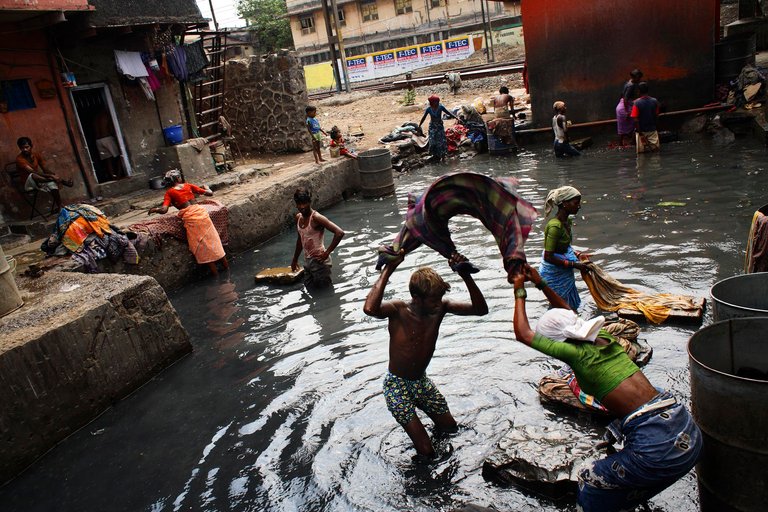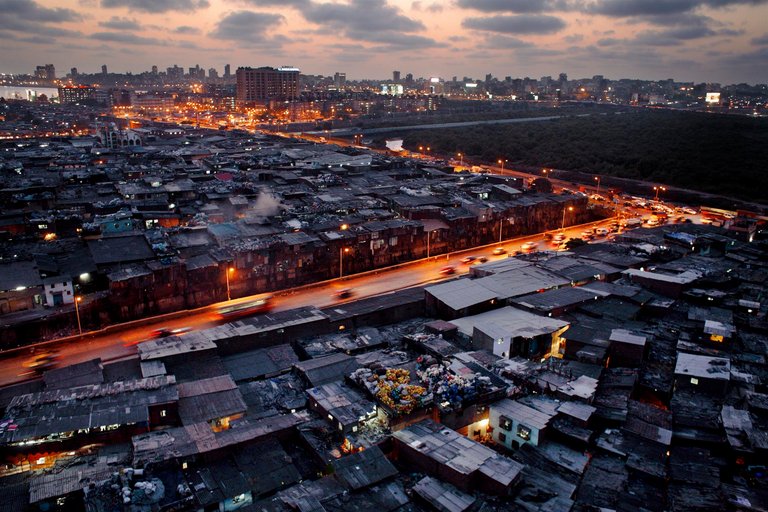Slums; Infamous for the poor quality of life that is prevalent in its ambit, are "hotspots" located at various places around the world. There are various classes of people:

SOURCE
- The Elites
- The Well-to-do
- The Average
- The Poor
Now being poor comes in various forms, it's either one can barely manage the expenses of the home, lives from hand to mouth (No plans for the future), or is barely keeping the body and soul together with faith and hopes (Nothing at all). Apparently, the latter are predominant in these areas. It is but only a 'NATURAL' occurence if the government policies, programmes are not enough to get everyone out of the mediocre life.
According to statistics, there are over 160 slums around the world. Kenya sits comfortably at the top as the country with the most slums (35 Slums) while Neza -Chalco-Izta is the largest slum in the world, it boasts of over 8 million people. Over one billion people currently live in slums around the world and this figure is expected to double by 2030.
Just like the worse and worst comparative and superlative adjectives, there are bad, worse slums and some slums are the worst. Let's take a look at one of the largest slums in the world:
DHARAVI INDIA

SOURCE
Listed among the top 5 slums in the world is Dharavi, a slum that sits right at the heart of Mumbai, the capital city and the most populous in India. A center of attraction for low income earners who cannot afford the high cost of living in developed areas as they offer accommodation for as low as 4$ per month. Dharavi is the largest slum in Asia and the third largest in the world coming after Neza-Chalco-Itza and Orangi. It houses over a million people.
Dharavi was formed in the 18th century after the bubonic plague in Mumbai that killed thousands of people. Before that time, Dharavi was an unplanned locality that was inimical to the development of Mumbai. After the Bubonic plague, the slum emerged against the backdrop of the relocation of polluting industries to the locality. To a great extent, the government played a part in the emergence of one of the most populous slums in the world.
LIFE IN DHARAVI

SOURCE
Being one of the largest slums in the world, one would expect it to be packed with all the qualities of a slum; The not-so friendly environment lacking in basic amenities such as good roads for efficient transportation, clean water supply, electricity, standard accomodations and so on.
There is, on average, 1 toilet for every 1450 people living in Dharavi
Given the rise of killer diseases like cholera, typhoid and malaria at the slightest hygiene complacency, the fact that there is but a toilet for about 1500 people is an assurance that not only would deadly diseases be abound, but the rate at which people fall sick and frequency of deaths will be as often as the blink of an eye. It is even more worrisome to think about child upbringing as it is devoid of the necessary things to properly raise or secure a child's future.
THE GOOD SIDE
Beyond all that, lies a bubbling productive community that can boast of major achievements.

SOURCE
Dharavi generates about of 650 million USD annually
This is greater than the economy of some countries and it is jawdropping. 650 Million USD is about 530 million Euros and 234 billion in our local currency (Naira). Packed with a lot of business activities like recycling, pottery, making of fabrics that take up about 500 business units. Dharavi boasts of over 20000 small factories.

SOURCE
They are not shut out from the world.
Business owners make use of their smartphones to transact and advertise their goods. If they do, it means they have access to the internet (which is packed with abundant information).
Have you ever heard of Slum Dog Millionaire?
Well, some of the scenes were shot in Dharavi. Slum Dog Millionaire is a famous 2008 movie directed Danny Boyle. It raked up over $350M dollars in box office. The film is actually an adaptation of a novel "Q&A" which was also set in Dharavi.
Teenage Girl Developers are making a mark. (Dharavi Coders)

Pièce de resistance
These young girls were taught coding after a visitor was touched by their plight. His motivations, teachings and encouragements created ripples that metamorphosed into waves that is changing their lives. These girls created Apps of different categories; Paani app alerts the inhabitants of dharavi the moment it is their turn to obtain water from the community tap. This eliminated the complication of queuing everyday. They also developed the Women Fight Back App which boasts of Hundreds of downloads on the google playstore and some other applications.
All these are proofs that the environment is not a restriction to the discovery and unleashing of potentials.
Written by @marvel1206, posted by @camzy


The slums is really a degrading place. Good there's hope and potentials for the citizenry of dhavari. Good Moral lesson in the post, Don't let your environment/background irestrict or limit you from discovering and unleashing your God given potentials.
Check out my blog I visit in real the slum .
Now, I learnt some things from this post and it piqued my interest. Would love to know which are the worst slums in Africa. Will check up on google but I will gladly read if something like that is posted too.
Spot on.... The environment truly do affect one's behaviour in both positive and negative ways but one thing is sure it is one that determines his own future so if one believes in himself/herself he or she can sure make it, many great people have come out from both poor families and ghettos. One's environment is not a restriction in achieving greatness. Thanks for sharing.
I've always wondered why India has the highest number of poor people and slums. Please is there anything their government is doing to resolve this?
Nice work
Awww. This is heartbreaking
The environment is indeed very horrendous. But whether slumpy or not, we must always look to make the most out of life wherever we find ourselves. There are heroes amongst us in every part of the world. Dharavi despite its latent horrible nature doesnt scare people wway from dreaming and hoping. We must cultivate the habit of dreaming and hoping even in times that it seems impossible. Thanks for sharing this.